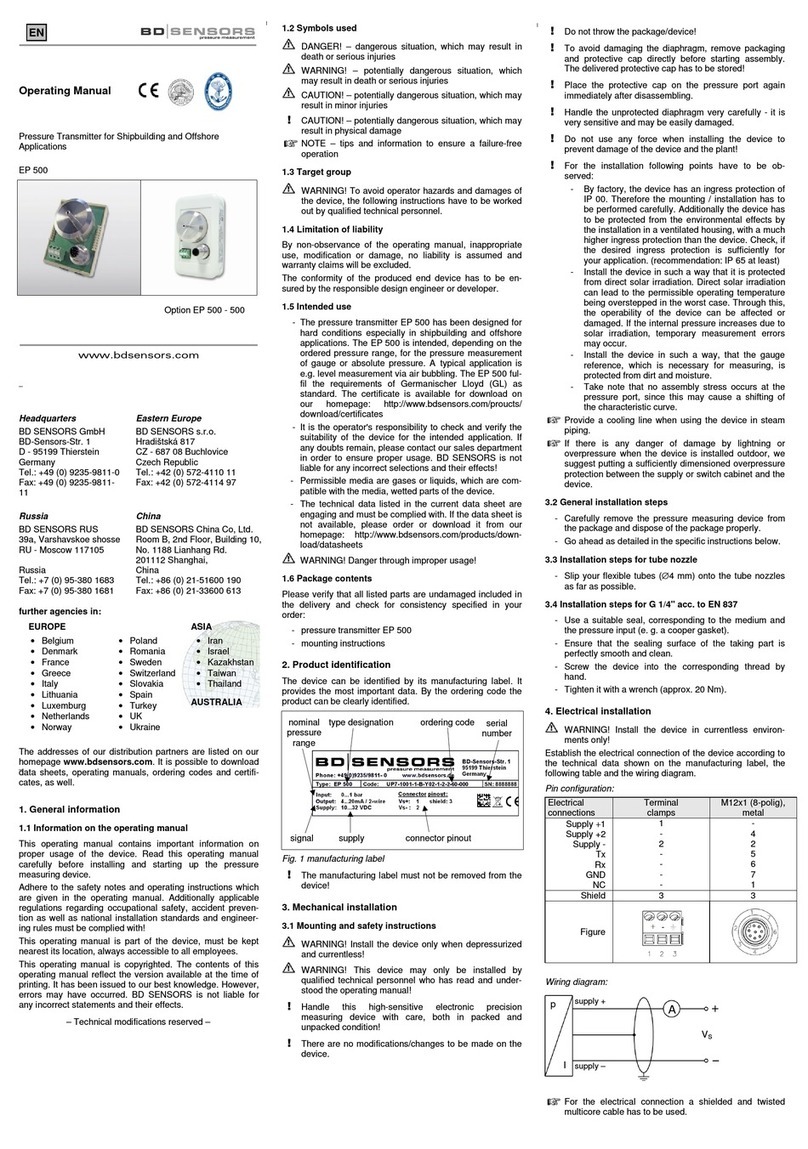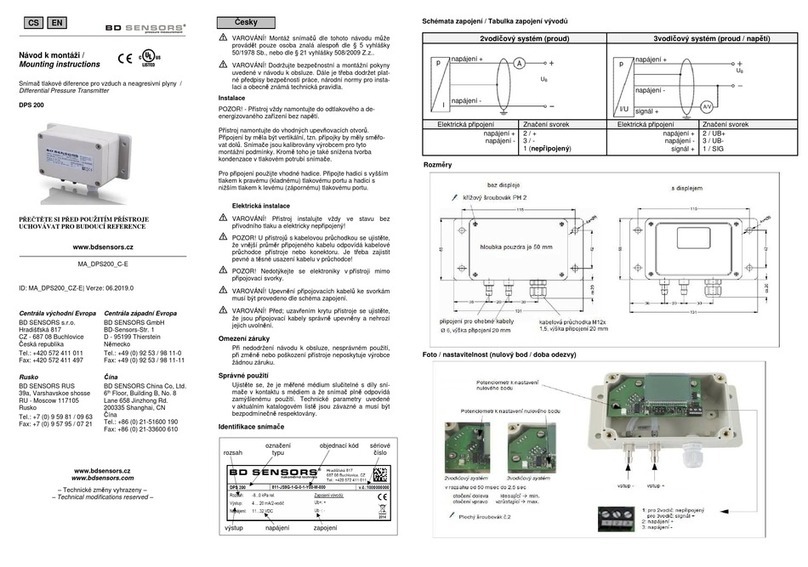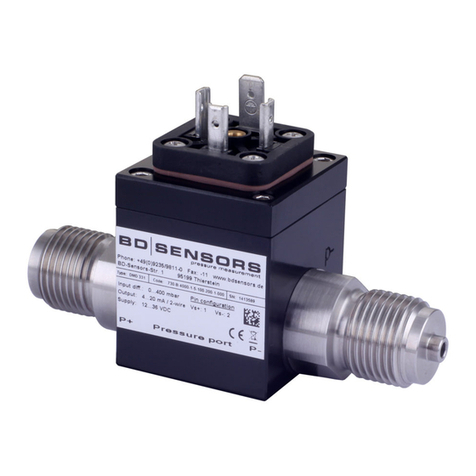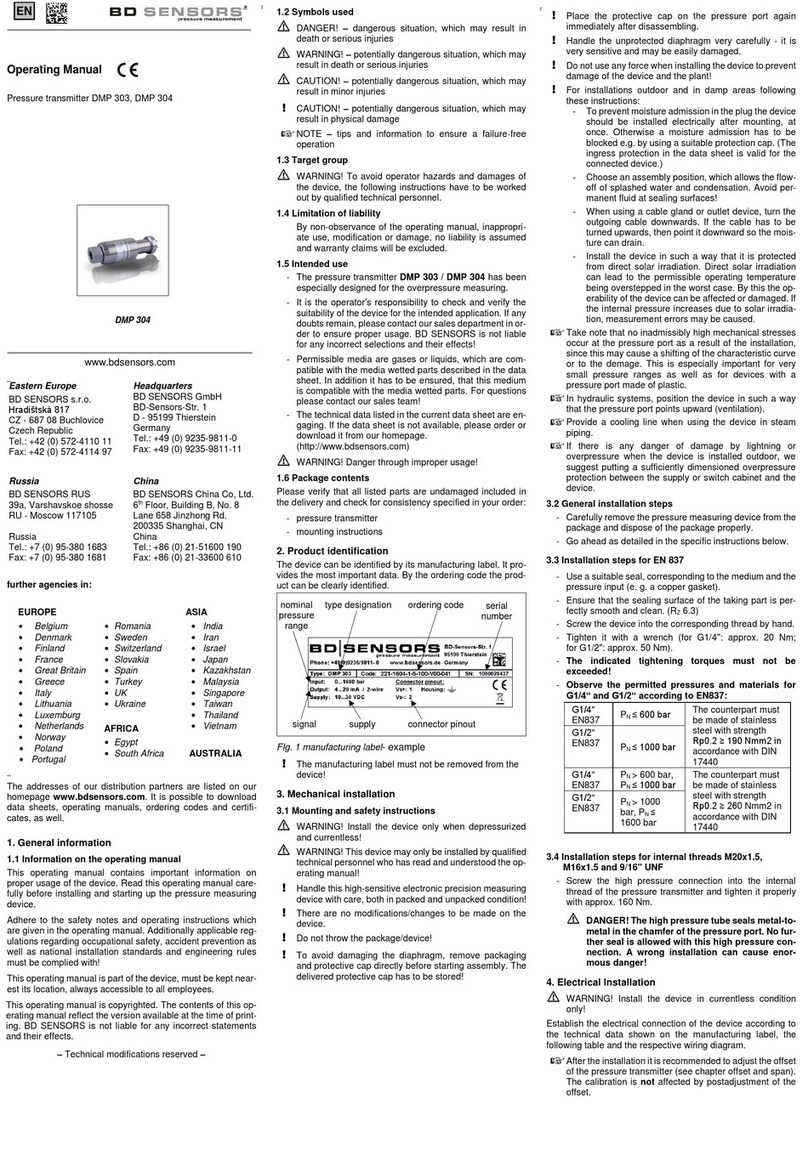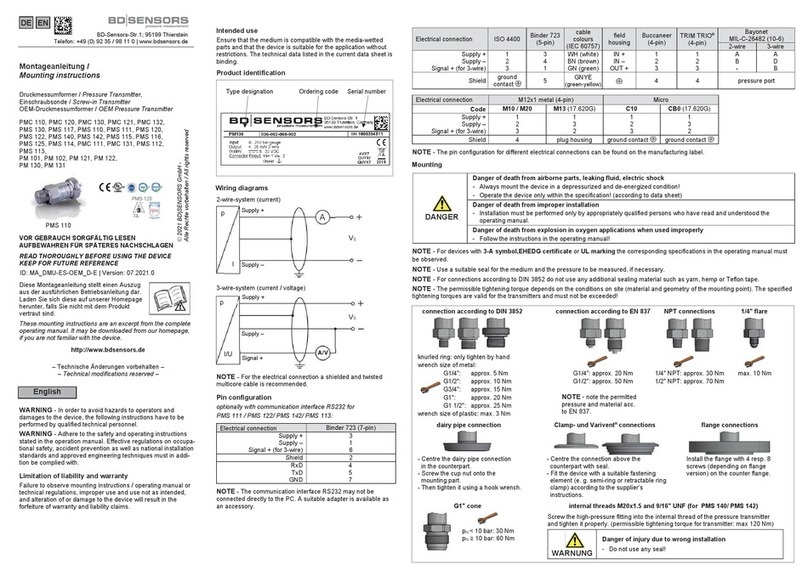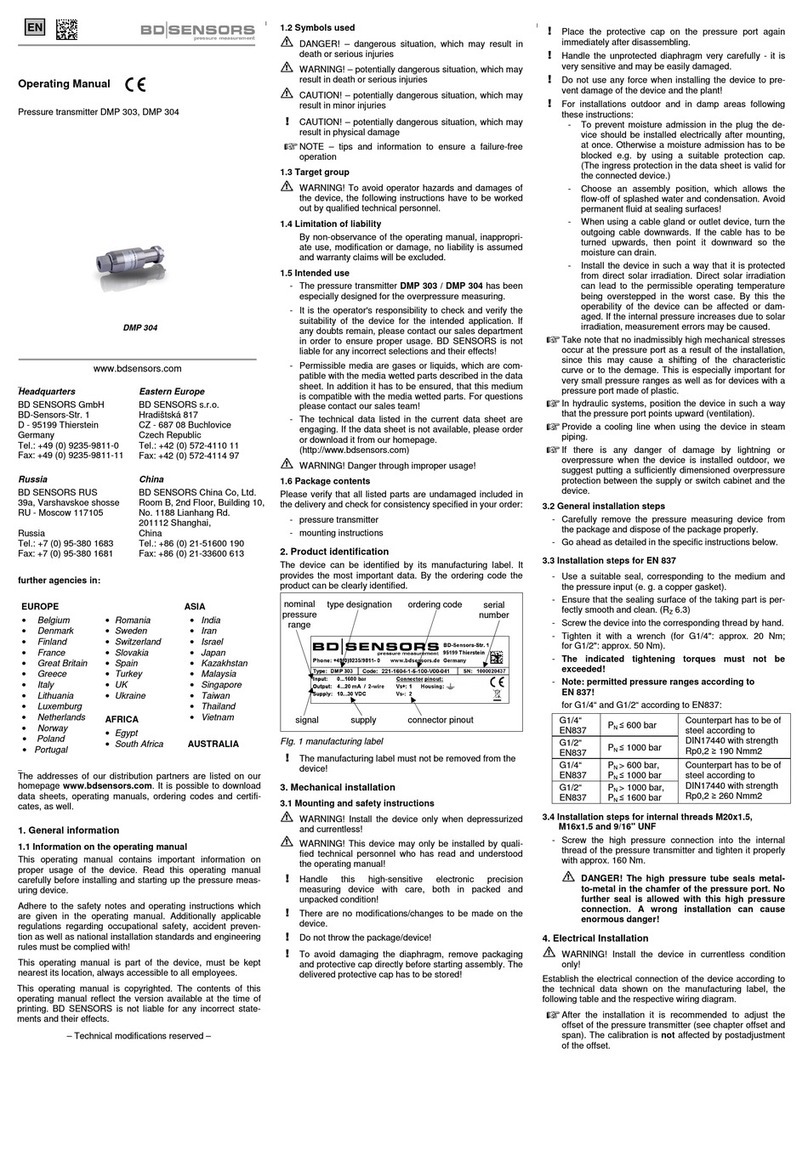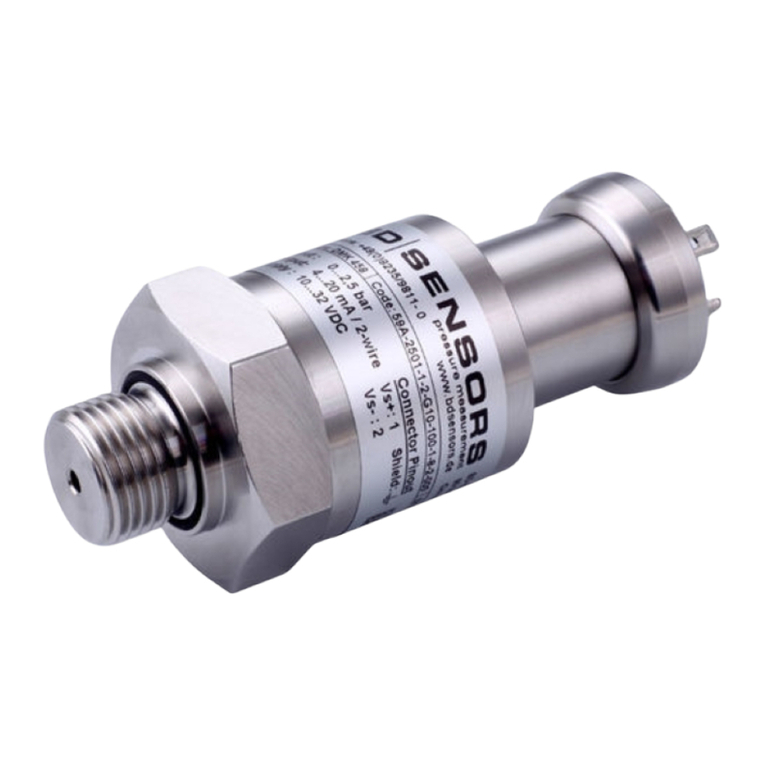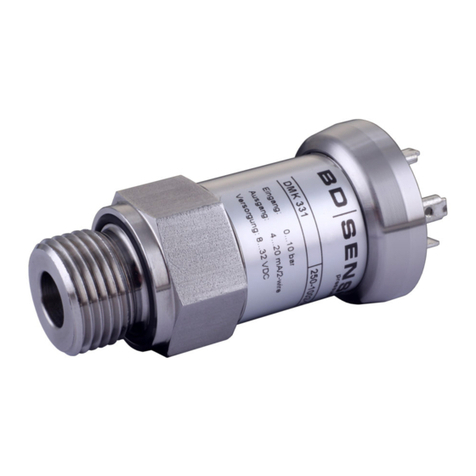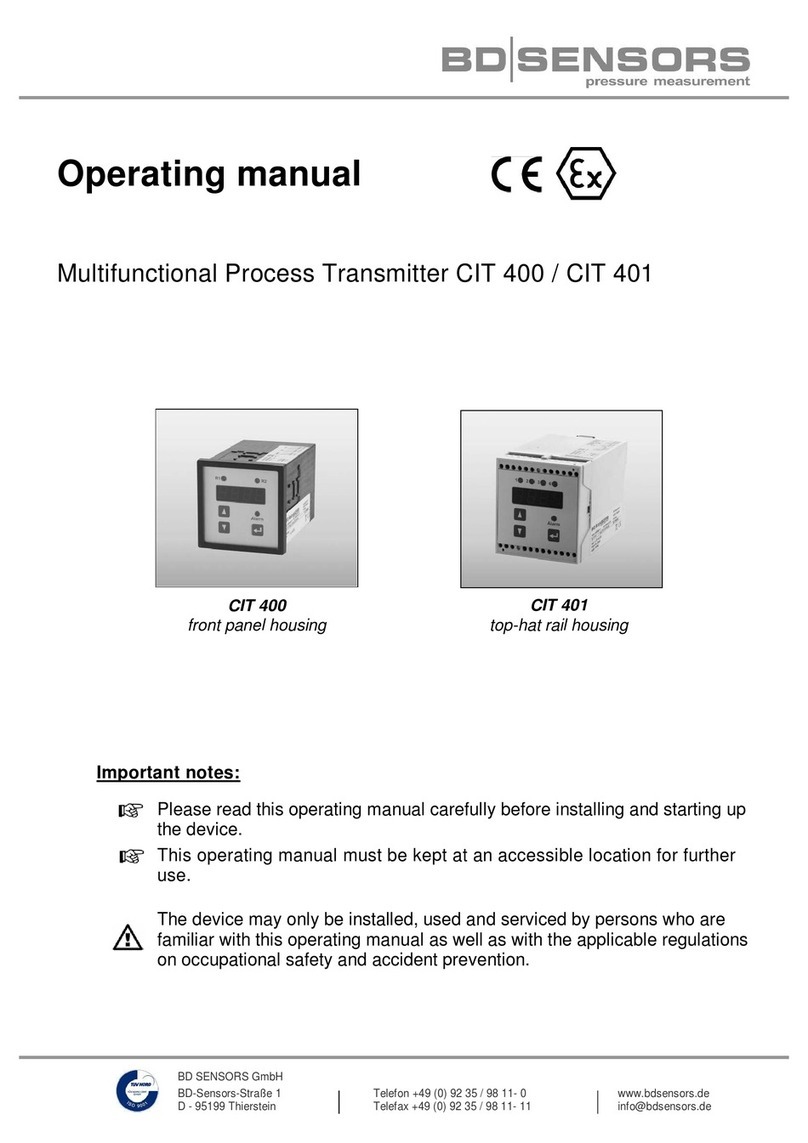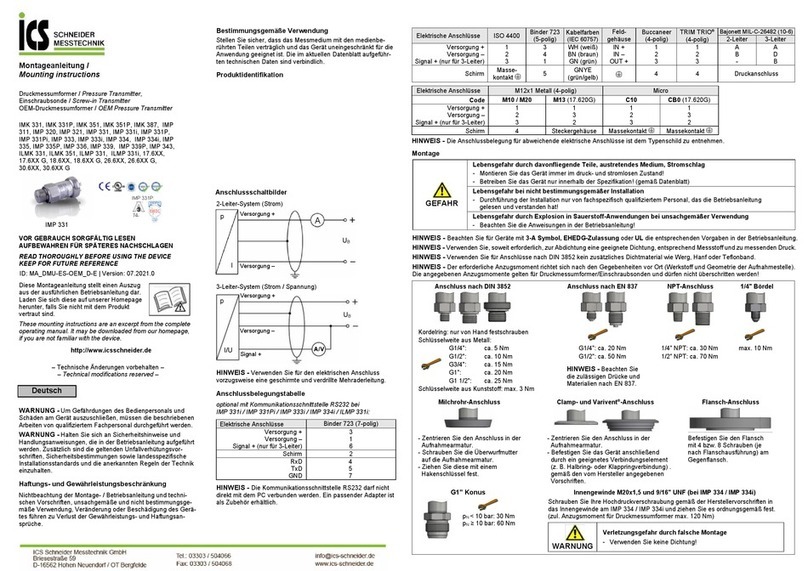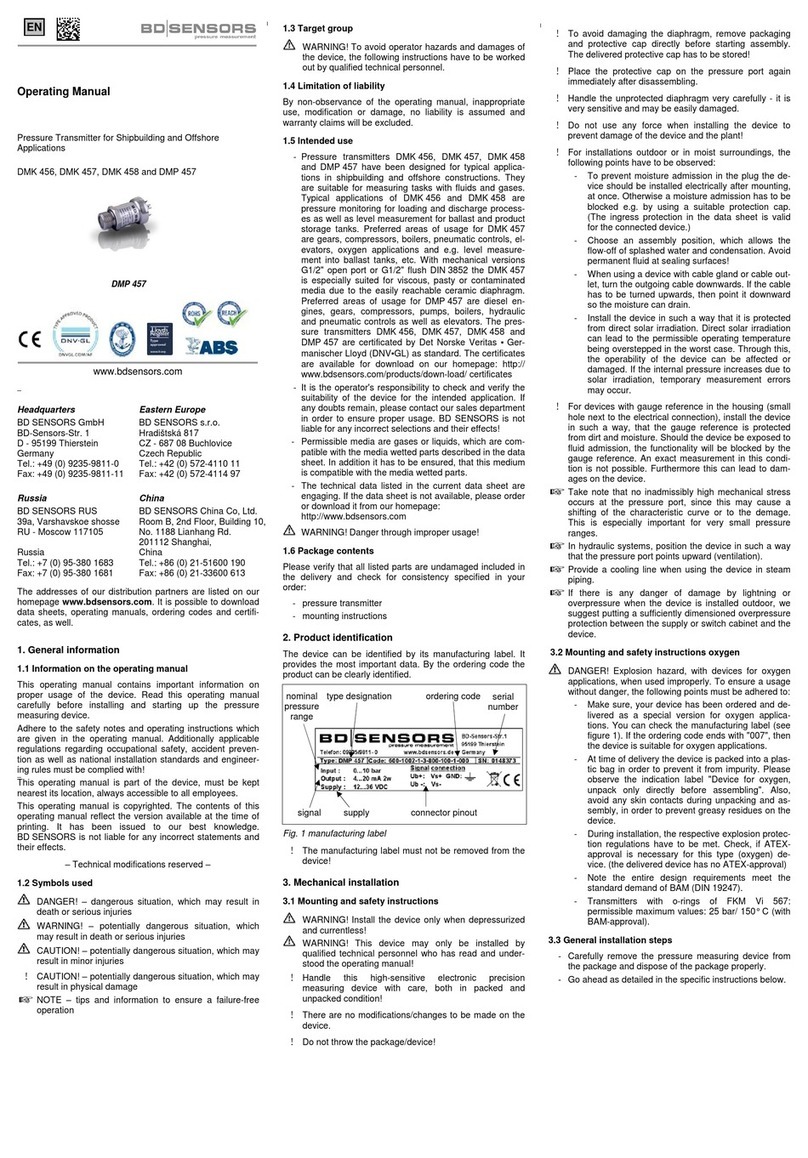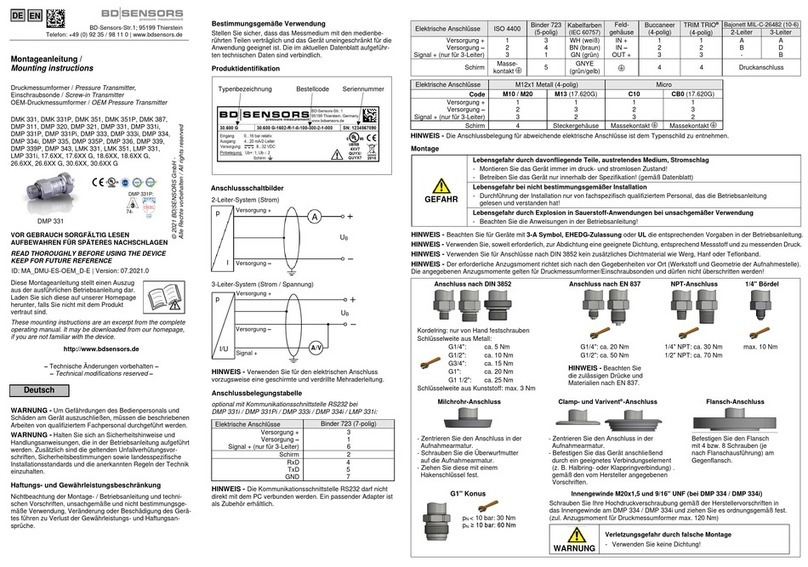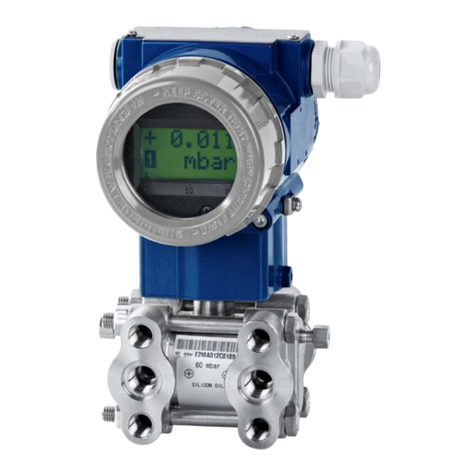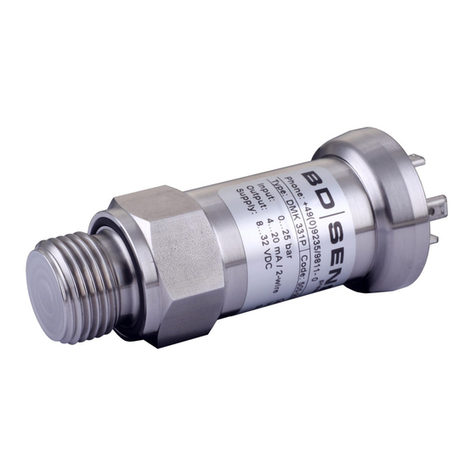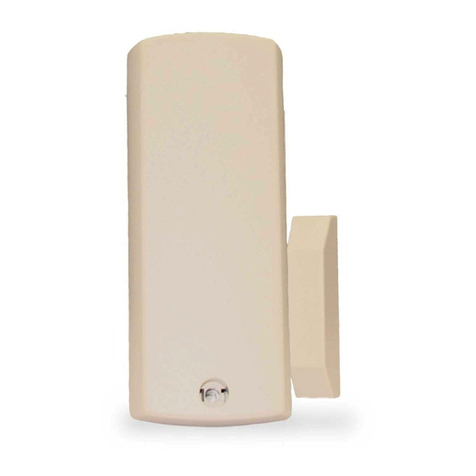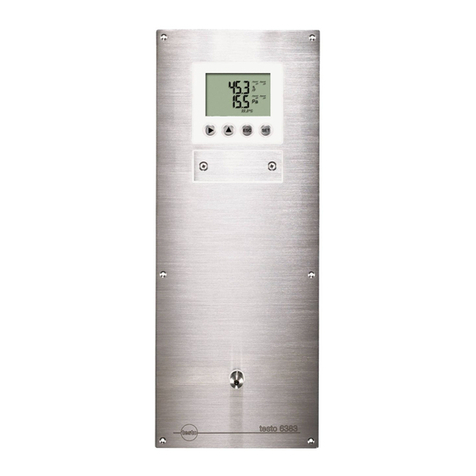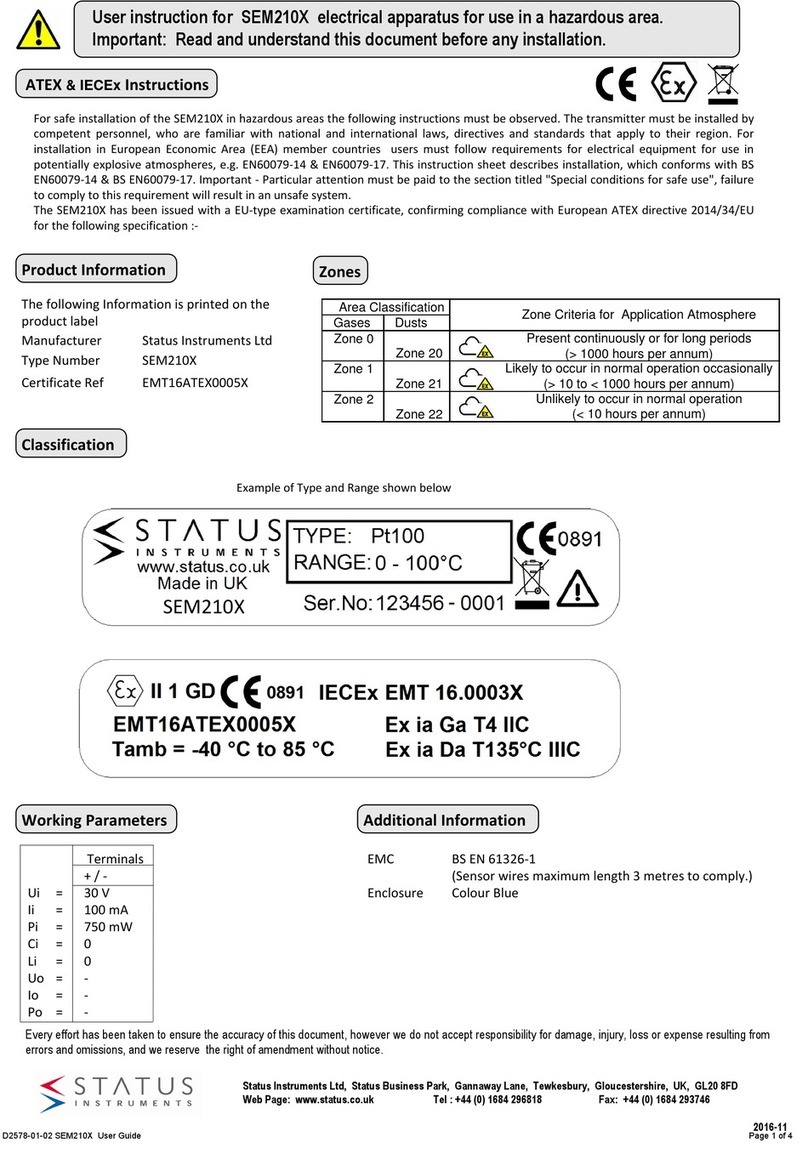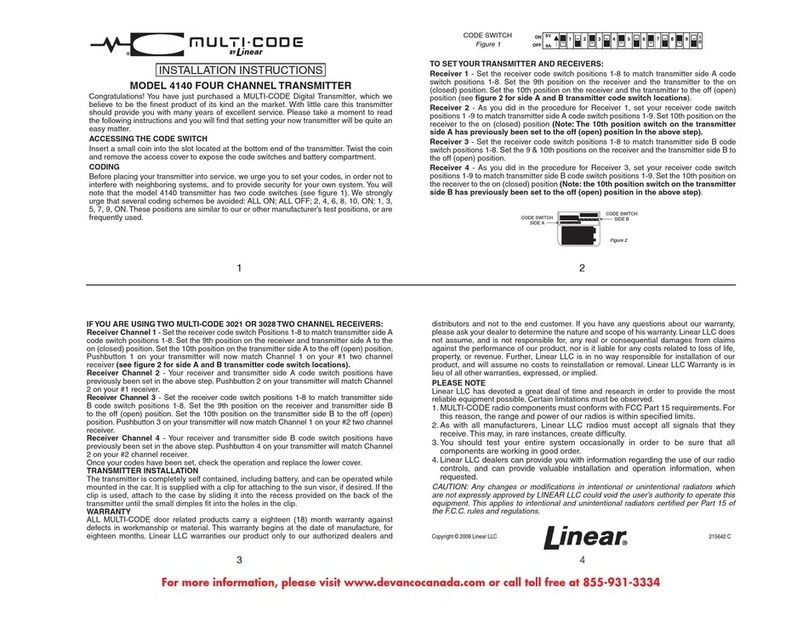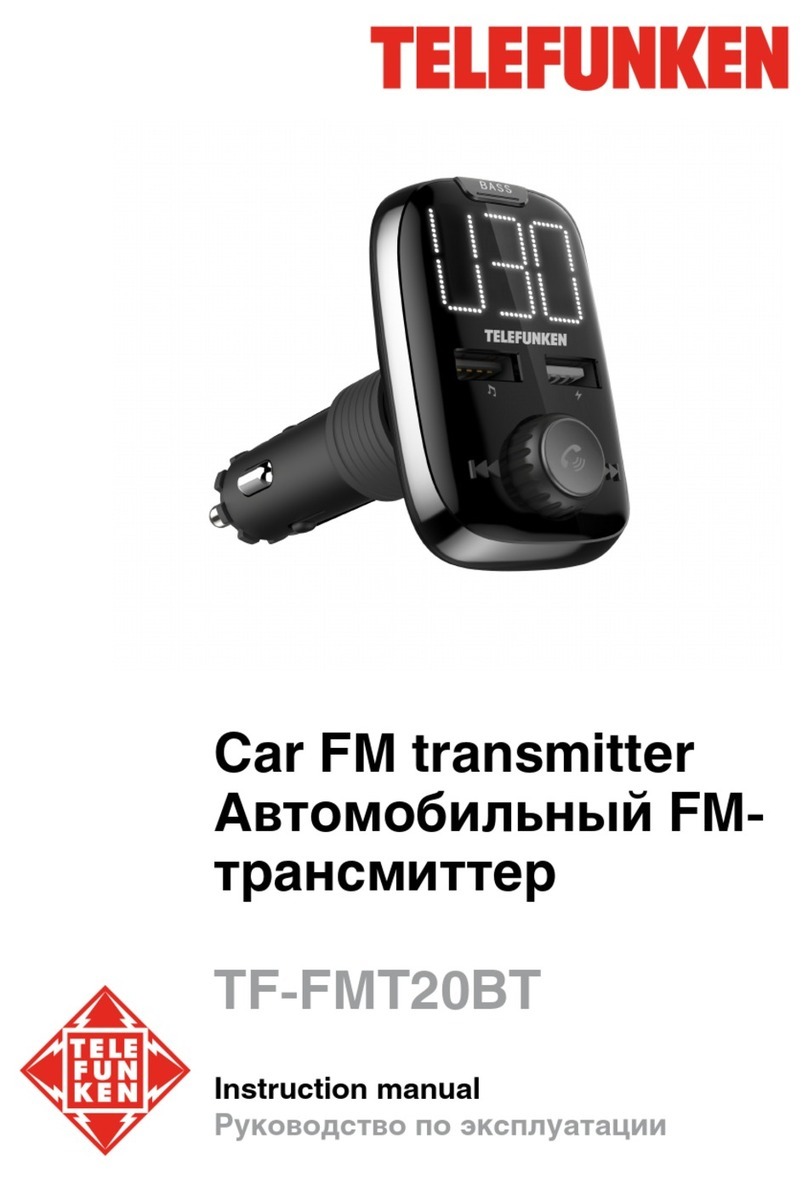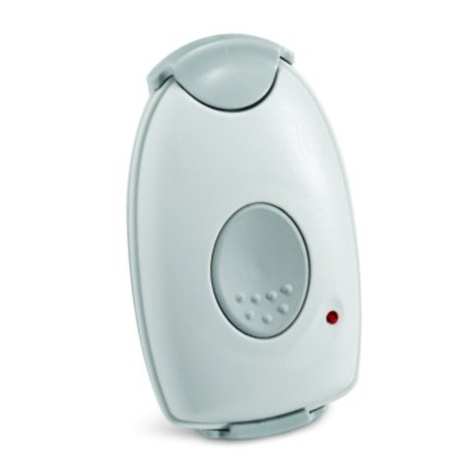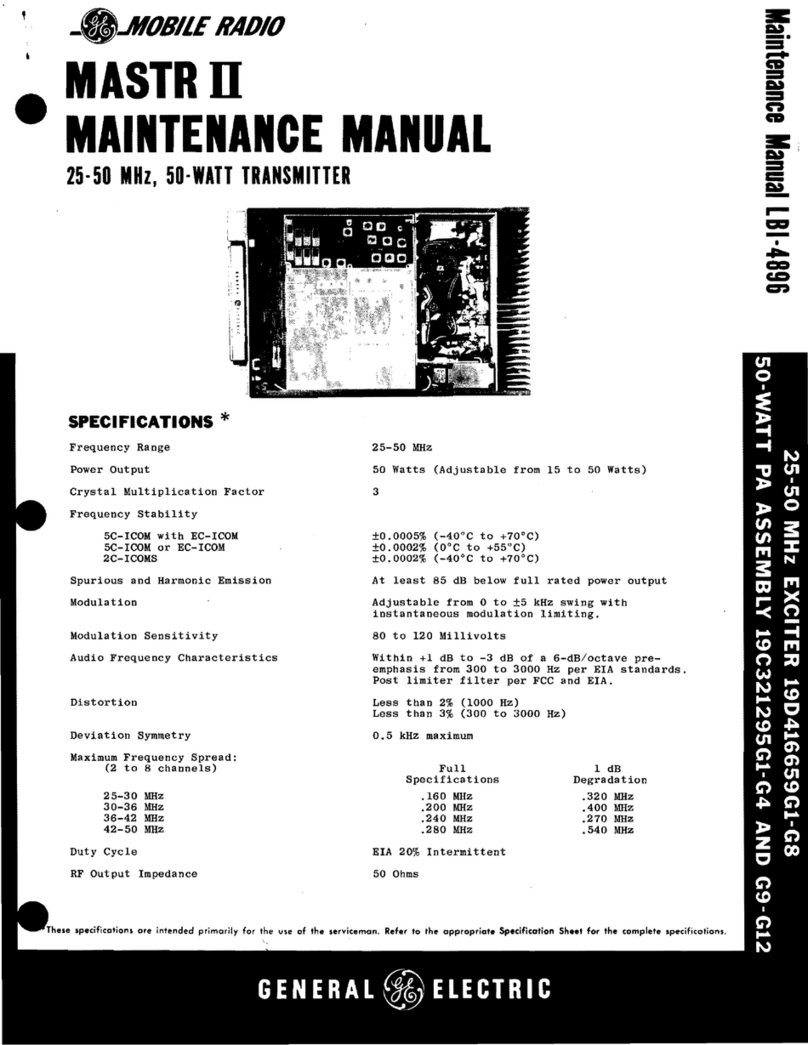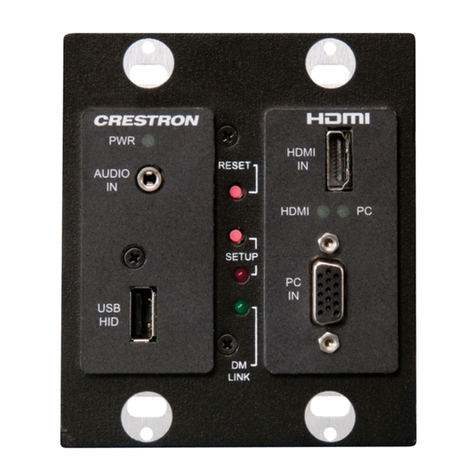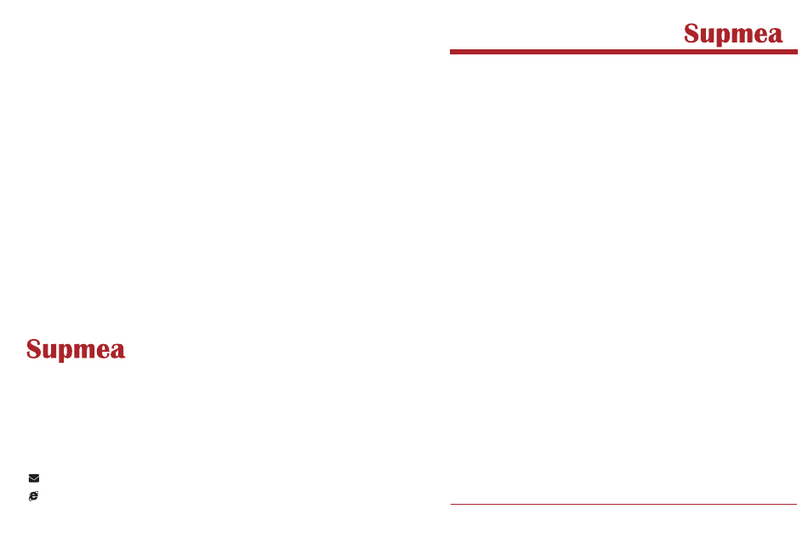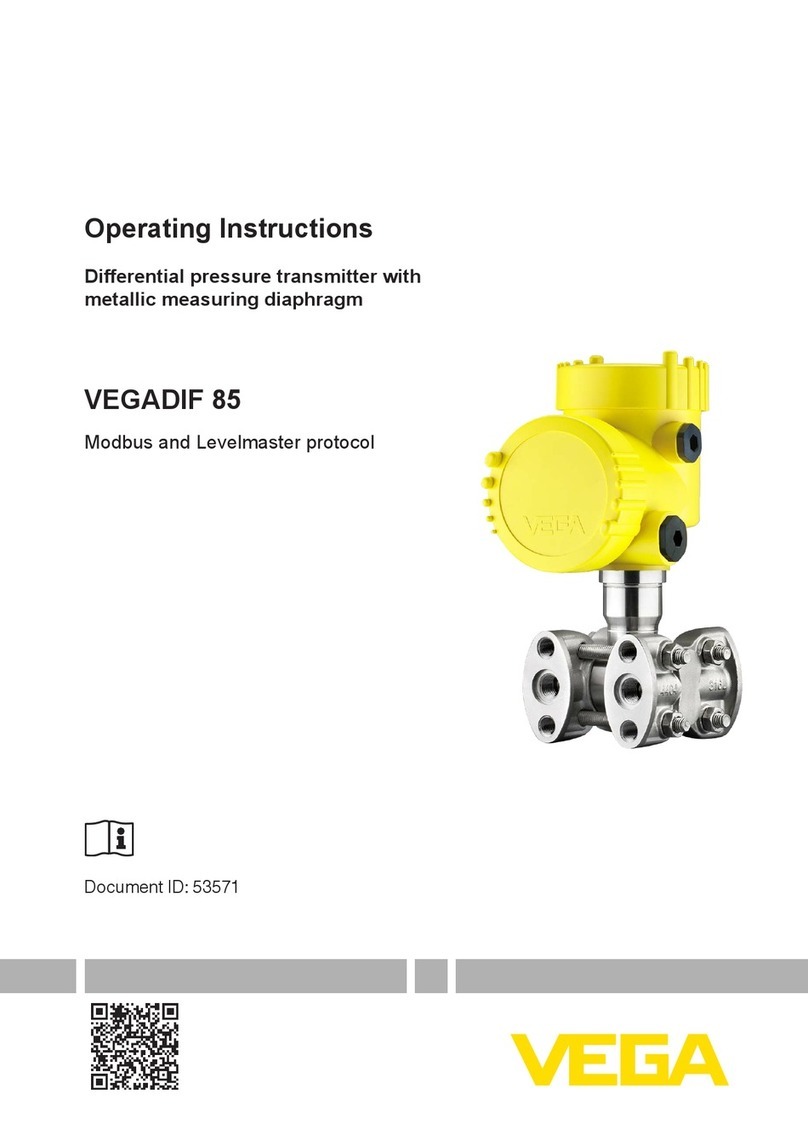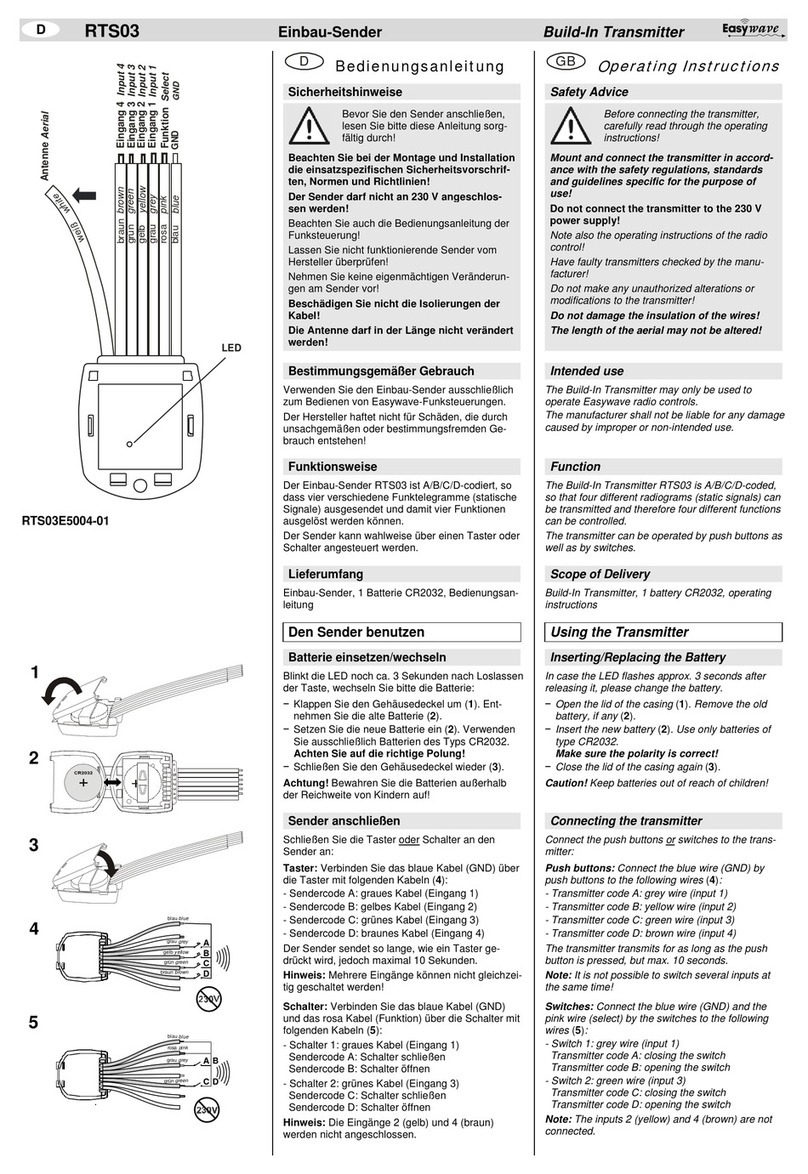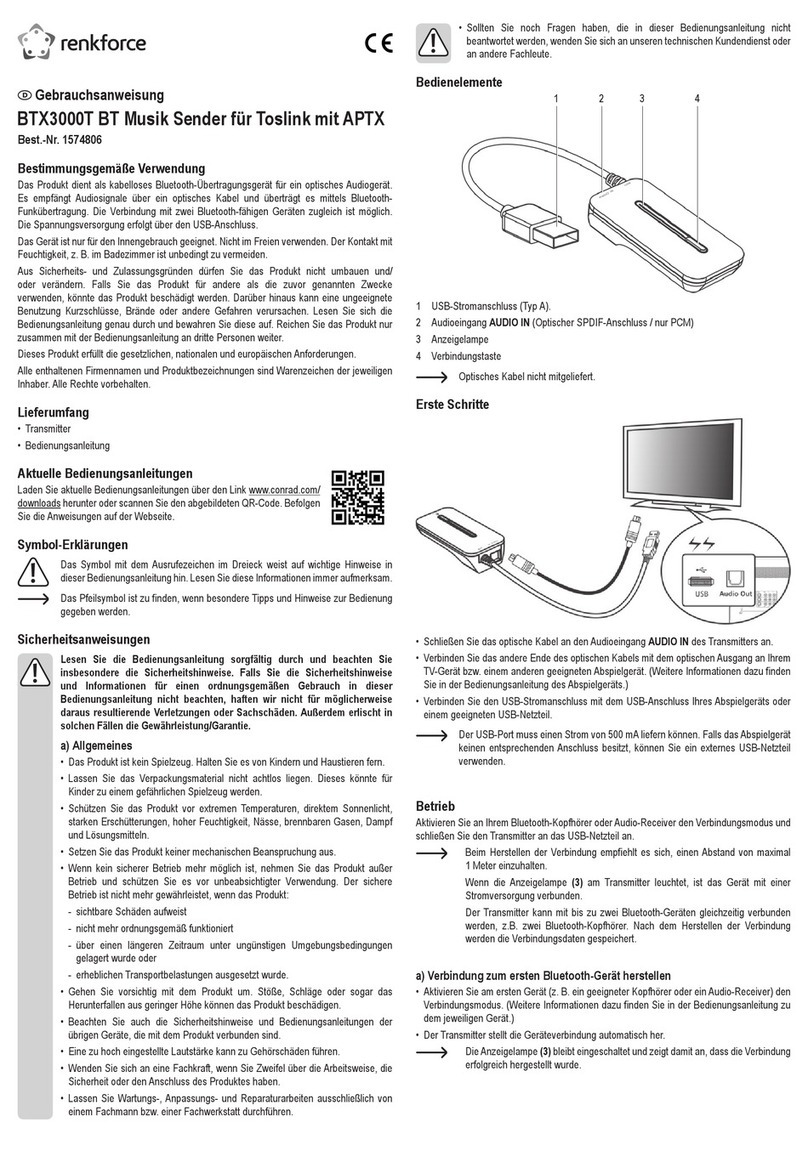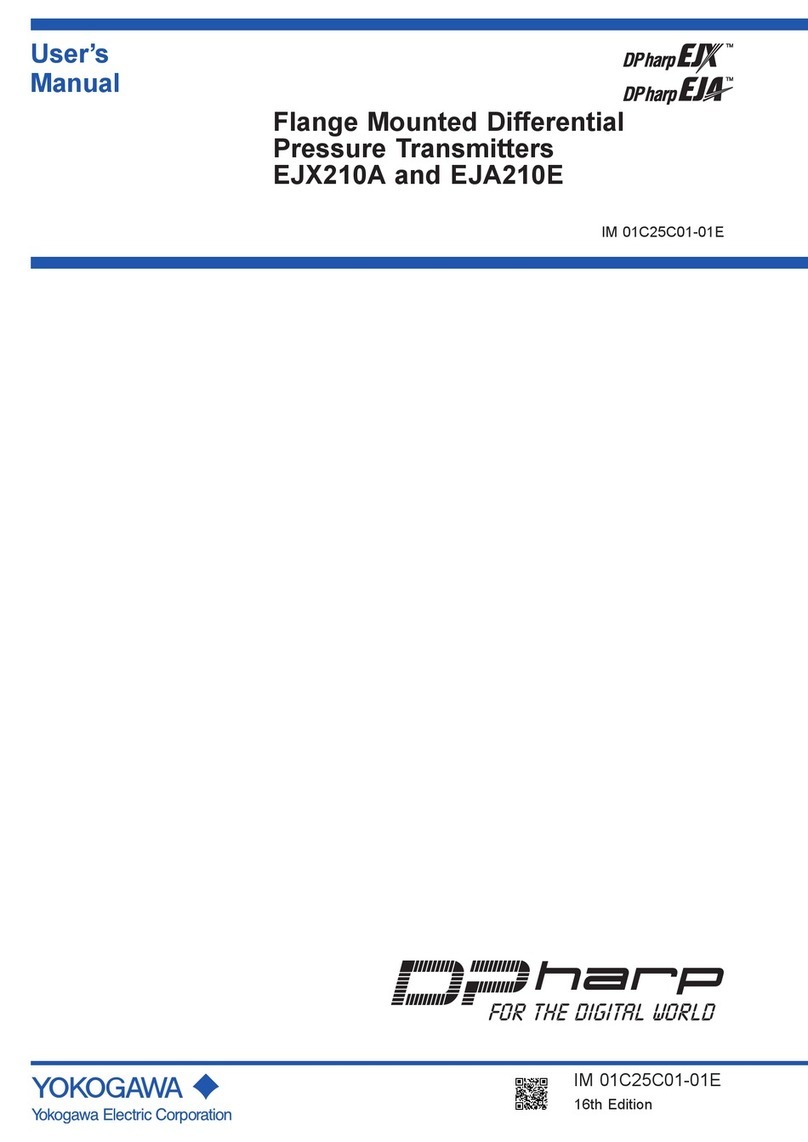
Operating Manual
Pressure Transmitter for Shipbuilding and Offshore
Applications
DMK 457, DMK 458 and DMP 457
Headquarter Western Europe / International
BD SENSORS GmbH
BD-Sensors-Str. 1
D - 95199 Thierstein
Germany
Tel: +49 (0) 92 35 / 98 11-0
Fax: +49 (0) 92 35 / 98 11-11
Headquarter Eastern
Europe
BD SENSORS s.r.o.
Hradištská 817
CZ - 687 08 Buchlovice
Czech Republic
Tel: +42 (0) 5 72 / 4 11-
Fax: +42 (0) 5 72 / 4 11-
Russia
BD SENSORS RUS
39a, Varshavskoe shosse
RU - Moscow 117105
Russia
Tel: +7 (0) 9 59 81 / 09 63
Fax: +7 (0) 9 57 95 / 07 21
further agencies in:
•Belgium
•Denmark
•France
•Greece
•Italy
•Lithuania
•Luxemburg
•Netherlands
•Norway
•Poland
•Romania
•Sweden
•Switzerland
•Slovakia
•Spain
•Turkey
•UK
•Ukraine
•Iran
•Israel
•Kazakhstan
•Taiwan
•Thailand
AUSTRALIA
The addresses of our distribution partners are listed on our
homepage www.bdsensors.com. It is possible to download
data sheets, operating manuals, ordering codes and certifi-
cates, as well.
1. General information
1.1 Information on the operating manual
This operating manual contains important information on
proper usage of the device. Read this operating manual
carefully before installing and starting up the pressure
measuring device.
Adhere to the safety notes and operating instructions which
are given in the operating manual. Additionally applicable
regulations regarding occupational safety, accident preven-
tion as well as national installation standards and engineer-
ing rules must be complied with!
This operating manual is part of the device, must be kept
nearest its location, always accessible to all employees.
This operating manual is copyrighted. The contents of this
operating manual reflect the version available at the time of
printing. It has been issued to our best knowledge. However,
errors may have occurred. BD SENSORS is not liable for
any incorrect statements and their effects.
– Technical modifications reserved –
1.2 Symbols used
U
UU
U
DANGER! – dangerous situation, which may result in
death or serious injuries
U
UU
U
WARNING! – potentially dangerous situation, which
may result in death or serious injuries
U
UU
U
CAUTION! – potentially dangerous situation, which may
result in minor injuries
!
CAUTION! – potentially dangerous situation, which may
result in physical damage
NOTE – tips and information to ensure a failure-free
operation
1.3 Target group
U
UU
U
WARNING! To avoid operator hazards and damages of
the device, the following instructions have to be worked
out by qualified technical personnel.
1.4 Limitation of liability
By non-observance of the operating manual, inappropriate
use, modification or damage, no liability is assumed and
warranty claims will be excluded.
1.5 Intended use
- Pressure transmitters DMK 456, DMK 457, DMK 458
and DMP 457 have been designed for hard conditions
especially in shipbuilding and offshore applications.
They are suitable for measuring tasks with fluids and
gases. Typical applications of DMK 456 and DMK 458
are pressure monitoring for loading and discharge proc-
esses as well as level measurement for ballast and
product storage tanks. Preferred areas of usage for
DMK 457 are gears, compressors, boilers, pneumatic
controls, elevators and oxygen applications. With me-
chanical versions G1/2" open port or G1/2" flush
DIN 3852 the DMK 457 is especially suited for viscous,
pasty or contaminated media due to the easily reach-
able ceramic diaphragm. Preferred areas of usage for
DMP 457 are diesel engines, gears, compressors,
pumps, boilers, hydraulic and pneumatic controls as
well as elevators. The pressure transmitters DMK 456,
DMK 457, DMK 458 and DMP 457 fulfil the require-
ments of Germanischer Lloyd (GL) as standard.
DMK 457 as well as DMP 457 is additionally certificated
by Det Norske Veritas (DNV). The certificates are avail-
able for download on our homepage: http://
www.bdsensors.com/proucts/download/certificates
- It is the operator's responsibility to check and verify the
suitability of the device for the intended application. If
any doubts remain, please contact our sales department
in order to ensure proper usage. BD SENSORS is not
liable for any incorrect selections and their effects!
- Permissible media are gases or liquids, specified in the
data sheet. In addition it has to be ensured, that this
medium is compatible with the media wetted parts.
- The technical data listed in the current data sheet are
engaging and must be complied with. If the data sheet is
not available, please order or download it from our
homepage: http://www.bdsensors.com/products/down-
load/datasheets
U
UU
U
WARNING! Danger through improper usage!
1.6 Package contents
Please verify that all listed parts are undamaged included in
the delivery and check for consistency specified in your
order:
- pressure transmitter
- mounting instructions
- with option SIL2 version:
Functional Safety Manual, Functional Safety Data
Sheet
, SIL Declaration of Conformity
2. Product identification
The device can be identified by its manufacturing label. It
provides the most important data. By the ordering code the
product can be clearly identified.
Fig. 1 manufacturing label
!
The manufacturing label must not be removed from the
device!
3. Mechanical installation
3.1 Mounting and safety instructions
U
UU
U
WARNING! Install the device only when depressurized
and currentless!
U
UU
U
WARNING! This device may only be installed by
qualified technical personnel who has read and under-
stood the operating manual!
U
UU
U
DANGER! Explosion hazard, with devices for oxygen
applications, when used improperly. To ensure a usage
without danger, the following points must be adhered to:
- Make sure, your device has been ordered and de-
livered as a special version for oxygen applica-
tions. You can check the manufacturing label (see
figure 1). If the ordering code ends with "007", then
the device is suitable for oxygen applications.
- At time of delivery the device is packed into a plas-
tic bag in order to prevent it from impurity. Please
observe the indication label "Device for oxygen,
unpack only directly before assembling". Also,
avoid any skin contacts during unpacking and as-
sembly, in order to prevent greasy residues on the
device.
- During installation, the respective explosion protec-
tion regulations have to be met. Check, if ATEX-
approval is necessary for this type (oxygen) de-
vice. (the delivered device has no ATEX-approval)
- Note the entire design requirements meet the
standard demand of BAM (DIN 19247).
- For devices with oxygen capability up to 50 bar, o-
rings V747-75 with BAM-approval are being used.
The max. capabilities allowed, are 40 bar/130°C
and 50 bar/100°C.
- For devices with oxygen capability over 50 bar, o-
rings FKM 90 are being used. These have been
tested up to 95°C and 215 bar in the scientific coal
research institute in Ostrava – CZ.
!
Handle this high-sensitive electronic precision
measuring device with care, both in packed and
unpacked condition!
!
There are no modifications/changes to be made on the
device.
!
Do not throw the package/device!
!
To avoid damaging the diaphragm, remove packaging
and protective cap directly before starting assembly.
The delivered protective cap has to be stored!
!
Place the protective cap on the pressure port again
immediately after disassembling.
!
Handle the unprotected diaphragm very carefully - it is
very sensitive and may be easily damaged.
!
Do not use any force when installing the device to
prevent damage of the device and the plant!
!
For installations outdoor or in moist surroundings, the
following points have to be observed:
- To prevent moisture admission in the plug the de-
vice should be installed electrically after mounting,
at once. Otherwise a moisture admission has to be
blocked e.g. by using a suitable protection cap.
(The ingress protection in the data sheet is valid
for the connected device.)
- Choose an assembly position, which allows the
flow-off of splashed water and condensation. Avoid
permanent fluid at sealing surfaces!
- When using a cable gland device, turn the outgo-
ing cable downwards. If the cable has to be turned
upwards, then point it downward so the moisture
can drain.
- Install the device in such a way that it is protected
from direct solar irradiation. Direct solar irradiation
can lead to the permissible operating temperature
being overstepped in the worst case. Through this,
the operability of the device can be affected or
damaged. If the internal pressure increases due to
solar irradiation, temporary measurement errors
may occur.
!
For devices with gauge reference in the housing (small
hole next to the electrical connection), install the device
in such a way, that the gauge reference is protected
from dirt and moisture. Should the device be exposed to
fluid admission, the functionality will be blocked by the
gauge reference. An exact measurement in this condi-
tion is not possible. Furthermore this can lead to dam-
ages on the device.
Take note that no assembly stress occurs at the
pressure port, since this may cause a shifting of the
characteristic curve. This is especially important for very
small pressure ranges as well as for devices with a
pressure port made of plastic.
In hydraulic systems, position the device in such a way
that the pressure port points upward (ventilation).
Provide a cooling line when using the device in steam
piping.
If there is any danger of damage by lightning or
overpressure when the device is installed outdoor, we
suggest putting a sufficiently dimensioned overpressure
protection between the supply or switch cabinet and the
device.
3.2 General installation steps
- Carefully remove the pressure measuring device from
the package and dispose of the package properly.
- Go ahead as detailed in the specific instructions below.
ordering code
connector pinout
type designation
supply
nominal
pressure
range
signal
serial
number
DMK 457/
DMP 457:
www.bdsensors.com


